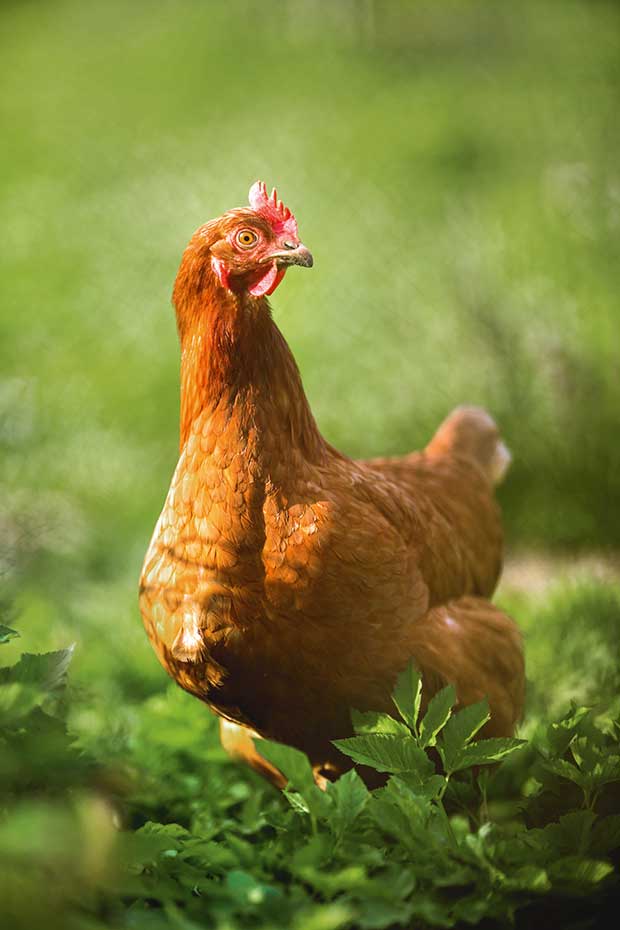
Gape Worm Infection In Poultry Chickens have a wide variety of parasites, including the gape
Gapeworm symptoms in chickens include gasping and coughing…However, this does not always mean that your bird is infected.Your chickens might also be making funny rasping noises, gasping for breath, and shaking their head.Gapeworm is very common Gapeworm symptoms in chickens include: Gasping , loss of appetite, yawning, respiratory distress.

Gapeworm in chickens YouTube
About Gapeworms. Gapeworms are parasitic worms that infect the trachea and lungs of chickens. They are also known as Syngamus trachea and are typically found in wild birds like pheasants and turkeys. These thin red worms range from 1-2 inches long and cause their hosts to experience severe respiratory distress.

Control & Treatment of Worms in Chickens The Chicken Chick®
Weigh your bird, then work out a dose and add it to drinking water. In this instance, for treating gapeworm, it's important to use Flubenol or Aviverm as they contain the chemical levamisol which works to kill the adult worms. Ivermectin-based products will not kill adult gapeworms.

How Long Does It Take A Gapeworm To Kill A Chicken? Coops Cave
Gapeworm is a parasitic infection caused by thin, red worms that reside in the trachea (windpipe) and lungs of infected birds, and feed on blood. Also called Syngamus trachea, this disease is commonly found in turkeys. However, it can also found in chickens, especially the younger ones because they have smaller trachea.
Don't Let the Fear of Gapeworm Keep you from Feeding your Chickens Earthworms Fresh Eggs Daily®
Chickens can acquire a surprising number of different types of parasites. Perhaps one of the most difficult types of internal parasites to detect in your poultry is the gape worm (or gapeworm, both are correct). It is a worm-type parasite that lives in the mucosal lining of the trachea (windpipe) of chickens, pheasants, turkeys and guinea fowl.
Gapeworm? Open mouth in roost. BackYard Chickens Learn How to Raise Chickens
This process takes around 7 days, gape worm lay eggs that get coughed up onto the ground or swallowed and passed out in the faeces. Signs and Symptoms. Signs and Symptoms relating an infestation causes respiratory distress. Gasping for breath or 'gaping' as it is known is the biggest sign of gape worm. Shaking of the head and neck stretching.
Help me SAVE my chicken who I think has Gapeworm Page 2
Gapeworms in a chicken's trachea can lead to severe respiratory distress. A high-pitched wheezing or gasping sound often characterizes it. This is commonly called 'gaping,' hence the name gapeworm. However, regular deworming, maintaining clean coops, and limiting contact with wild birds are all crucial steps in keeping your flock gapeworm.

What is gapeworm? The Good Life Backyard
Many gapeworm larvae may encyst and survive within a single invertebrate for years. Although gapeworms are not a problem in confinement-reared poultry, they cause serious economic losses in game-farm pens and in range-reared chickens, pheasants, turkeys, and peacocks. Cyathostoma bronchialis is the gapeworm that infects geese and ducks.

Gapeworm in chicks? More in comments BackYardChickens
They are much more common in pheasants, and your chickens are more likely to pick up gapeworm if they free range on land that has pheasants visiting. Gapeworm page; Caecal worms. Caecal worms are grey to white and up to 1.5cm long. They are S-shaped. Worm eggs are too small to be visible with the naked eye and have to be identified under a.

Chicken with Gapeworm YouTube
Diagnosing gapeworm infection in chickens can be tricky, as symptoms can overlap with other respiratory diseases. The most reliable way to diagnose gapeworms is by taking your bird to a veterinarian who can perform a thorough examination and run a lab test. Your vet may also do a fecal exam to check for the presence of gapeworm eggs.

Sick Chicken with Gapeworm...? YouTube
Chickens get infected when they ingest parasite eggs. This can be via contaminated food, earthworms, or insects carrying the parasite. 4. Gapeworms (Syngamus trachea) Gapeworms (aka red worms, forked worms) are common Y-shaped parasites that live in the windpipe of chickens, where they cause breathing problems. They can reach up to 13 inches.

Is your chicken gasping for air? It could mean it has gapeworms
Gapeworm and Chicken Respiratory Disease (CRD) have very similar symptoms but require entirely different treatment. Symptoms of gapeworm. Gapeworm (Syngamus trachea) is a parasitic infection of thin, red worms which live in the trachea, and sometimes the bronchi or lungs, of birds. They can affect chickens but are more common in turkeys.

Should I Be Worming My Chickens? Appletons
These indicate gape worms. Keep it clean: Clean the chickens' living area and provide fresh bedding. Herbal remedies: Garlic, wormwood, thyme, and turmeric all have anthelmintic properties. Incorporate into the chickens' diet or add to their water. Organic dewormers: Buy organic dewormers specifically for chickens.

Chicken yawning with gapeworm YouTube
My flock is in stationary housing, so worming is of higher importance. There are a few main types of internal worms that can affect chickens; roundworms, gapeworms, threadworms and tapeworms being the most common. A heavy load of worms can interfere with a hen's ability to absorb nutrients and therefore affect her health and egg production.

How to treat Gapeworm Chicken choking Animal health YouTube
Quote: Also I have seen gaping when it was a respiratory problem (aspergillosis). Gaping doesn't necessarily mean gapeworm as dawg53 said. I have never dealt with gapeworm. This could definitely be a respiratory disease (I don't have the knowledge to say it isn't gapeworm but wanted to chime in that gaping is seen with respiratory ailments also).

Chicken with Gape Worm YouTube
Gapeworm is common in pheasants but also affects chickens, guinea fowl and turkeys. Gapeworms can cause considerable losses in pheasants and turkeys. Gasping for breath or 'gaping' as it is known is the biggest sign of gapeworm. Shaking of the head and neck stretching are also common. When birds are held, gurgling can often be heard which.